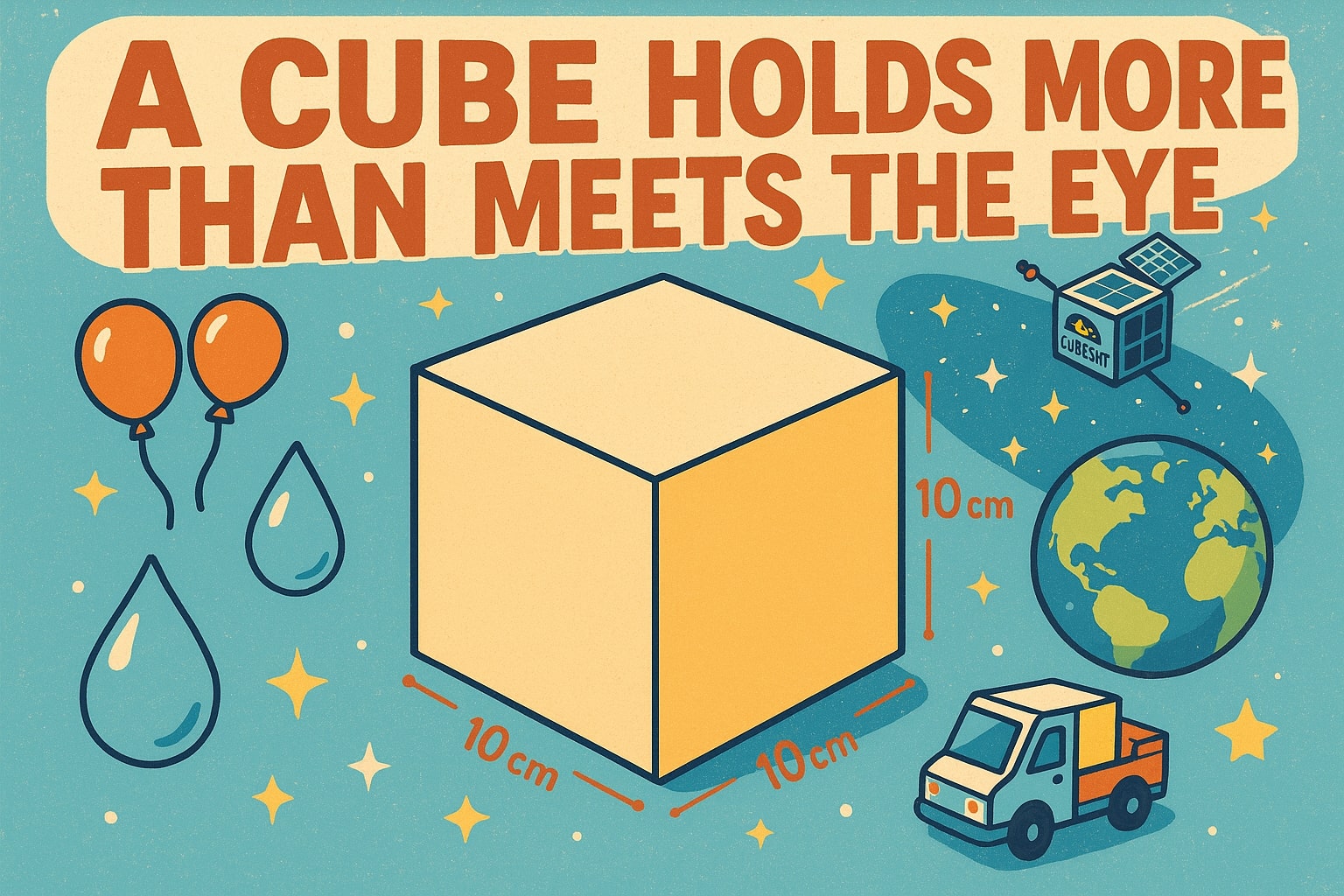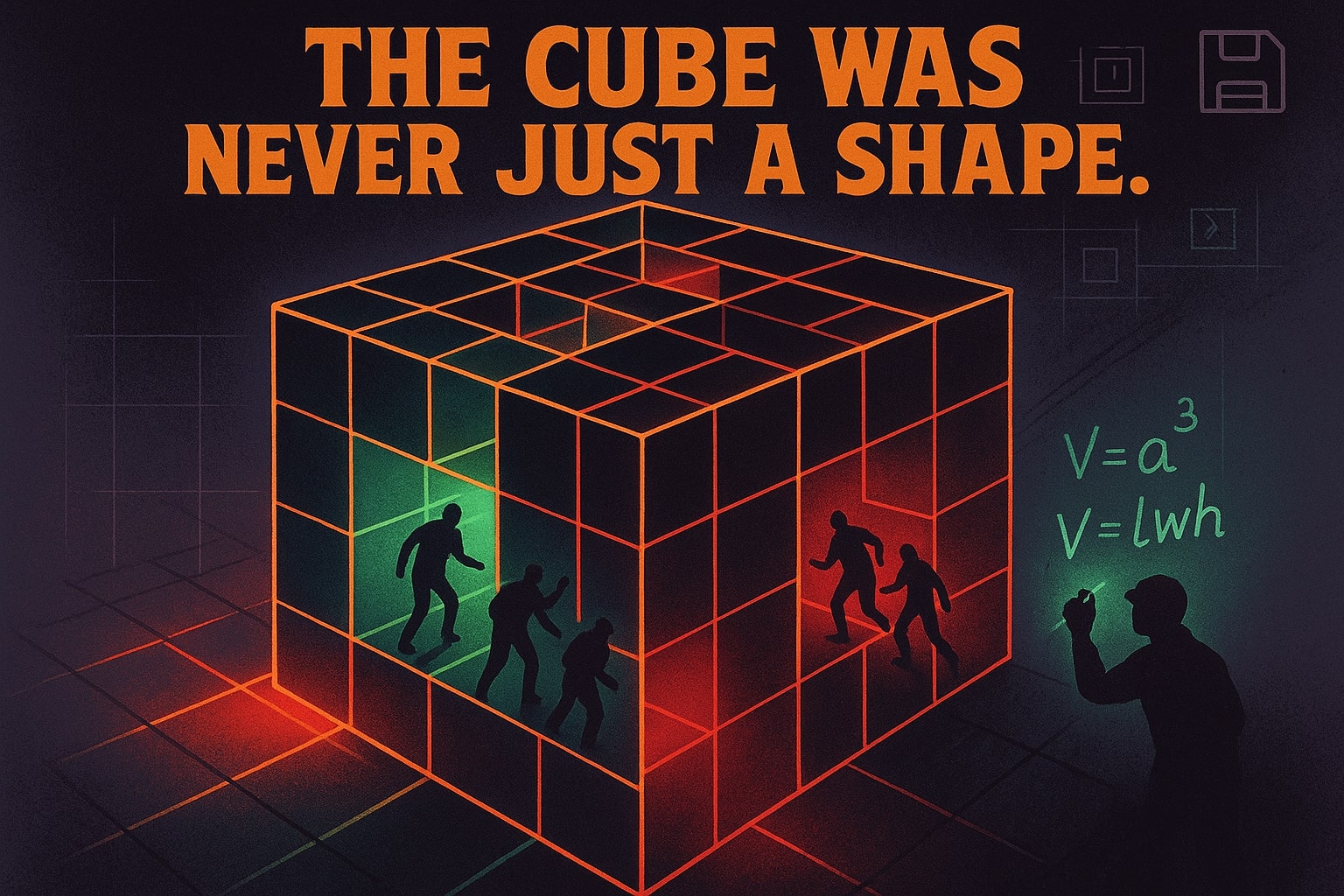Think about the last time you packed a moving box or held a dice in your hand. Ever wondered how much stuff fits inside? That’s exactly what volume tells you—how much space something occupies in three dimensions. And when it comes to calculating volume, few shapes make it easier than the cube. With all sides equal, it’s a favorite in everything from architecture and engineering to toys and satellites.
For other 3D shapes like spheres, cylinders, or cones, the Volume Calculator has everything you need in one spot.
What Is the Volume of a Cube?
Let’s begin with the basics. Volume measures the three-dimensional space something occupies. Whether it’s how much air fits in a balloon, how much water a container can hold, or how much room a box takes up in a truck—that’s all volume.
Now, a cube is a special case. All its sides are the same length: equal height, width, and depth. That symmetry makes calculating its volume super simple compared to other shapes like rectangular prisms or cuboids.
💡 Fun Fact: Ever heard of CubeSats? These are compact satellites used by NASA and other space organizations. Each CubeSat is a perfect cube measuring 10 cm on all sides. Calculating its volume accurately is critical for launch precision and payload distribution.

Try out Rectangular Prism Volume Calculator
How to Calculate Cube Volume – With Units
Knowing the formula is just the start—what really matters is applying it correctly, step by step.
1. Measure One Side
Since all sides of a cube are equal, you only need to measure one edge. This could be in inches, centimeters, feet, or any other length unit. Just stay consistent.
2. Convert Units (If Necessary)
Make sure your measurements match your output goal. Want your result in cubic meters? Measure in meters. Don’t mix units like inches and centimeters—it’ll throw off the whole calculation.
3. Use the Cube Volume Formula
Now that you have the side length in the correct unit, plug it into the formula:
Volume = side × side × side or Volume = s³
Example: If each side of a cube measures 5 cm:
-
5 × 5 × 5 = 125 -
Volume = 125 cm³(read: cubic centimeters)
This tells you the cube can hold 125 cubic centimeters of space—whether it’s air, candy, or packing peanuts.
Try out Sphere Volume Calculator
Cube Volume Table
Need quick answers without doing the math? This table shows common cube side lengths and their volume equivalents:
| Cube Side Length | Volume (V = a³) |
|---|---|
| 1 cm | 1 cm³ |
| 2 cm | 8 cm³ |
| 3 cm | 27 cm³ |
| 5 cm | 125 cm³ |
| 10 cm | 1,000 cm³ |
| 1 inch | 1 in³ |
| 6 inches | 216 in³ |
| 1 foot | 1 ft³ |
| 2 feet | 8 ft³ |
This table provides a quick way to estimate cube size to volume values without needing a calculator.
The Cube That Trapped People
In 1997, an indie sci-fi film called “Cube” introduced viewers to a terrifying concept: a vast structure made entirely of interconnected cube-shaped rooms. Strangers trapped inside had no idea how they got there—or how to escape. Some rooms were booby-trapped, others safe, and the only clues to survival lay in understanding the geometry of their surroundings.
One character even begins calculating the volume of the whole cube structure in her head, using basic cube math to estimate how many rooms exist and how close they are to the outer walls.
While it was a suspenseful metaphor, the logic was real: if you know the volume of a large cube and the volume of each smaller cube, you can figure out how many fit inside. It’s a concept that’s just as useful in construction, data storage design, and logistics as it is in movies.
From engineering blueprints to fictional traps, the cube proves time and again that it’s not just a basic shape—it’s a powerful tool for solving real problems

Check out Math section to solve math quickly and easily

